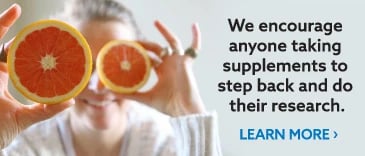
When was the last time you purchased your shampoo, an all-purpose cleaner, or a bottle of water and thought about the possible repercussions of using such everyday items?
Like most consumers who assume these essential items are harmless, you may be surprised to find out that top brands for each and every one of them has been found to contain chemicals called xenoestrogens. Xenoestrogens are either synthetically produced or naturally derived chemicals that mimic our bodies endogenous estrogen hormone molecules.1 They are also called estrogen disrupters because of their ability to alter the function of the endocrine system.
What Are the Dangers of Xenoestrogens?
When xenoestrogens enter our body and interact with estrogen receptors, they block the receptors from properly binding to endogenous estrogen. This can initiate an increase in endogenous estrogen production, creating estrogen dominance or a greater ratio of estrogen than normal baselines. Signs can range from mood swings to weight gain and decreased libido to headaches.
Xenoestrogens are stored in the body’s fat tissues and are difficult to detoxify. When the body is repeatedly exposed to these estrogen disrupters, it will build up fat storage for all of the xenoestrogens and send a signal telling the brain that there is enough estrogen, causing a decrease in estrogen production and symptoms such as fatigue, weight gain, or headaches.2 Women, due to their hormonal constitution and higher constitution of adipose tissue, are at a higher risk of breast cancer and endometriosis from long-term exposure to xenoestrogens.3
The accumulation of xenoestrogen chemicals can be dangerous for children with developing brains, nervous systems, and reproductive organs. Studies have shown that high xenoestrogen exposure can lead to early puberty in girls, disrupting the natural function of their endocrine system.4


Where Do Xenoestrogens Come From?
Xenoestrogens can be found in household items, personal care products, plastic food and beverage containers, herbicides, and pesticides. Some of the most common xenoestrogen chemicals are listed below:5
- 4-MBC: 4-Methyl benzylidene camphor, which is found in sunscreen lotions
- Parabens, phthalates, and sodium lauryl sulfate: Methylparaben, ethylparaben, propylparaben, and butylparaben are commonly found in personal care products such as shampoos and lotions
- BPA: Bisphenol A, which is found in plastic containers
- Erythrosine/FD&C Red No. 3, which is found in processed food
- BHA: Butylated hydroxyanisole, which is used as a food preservative
- Atrazine—a weed killer
- DDT—an insecticide
- Chlorine household products
- Petrochemicals, which are found in perfumes and colognes
- Fluoride, which is found in tap water
Some chemicals like BPA are known to leech into food from plastics when heated in microwaves or left out in the sun. Placing plastic containers in the dishwasher is also potentially dangerous, as harmful estrogen disrupters can be released during the heating process.
If buying products isn’t hard enough with all the variety that’s out there, avoiding xenoestrogen-containing products can feel overwhelming, especially with no standardized way to recognize them. Consider the following options to reduce your exposure and limit the impact of estrogen disrupters to your health.
Reducing Exposure with Dietary Changes
One of the simplest, but often overlooked, ways to reduce the body’s exposure to xenoestrogens is to switch from purchasing non-organic items to purchasing organic items. Immediate cost savings don’t outweigh the long-term health risks of buying food coated with pesticides.
A recent trend is having a more open conversation about meats and dairy and how to make these products hormone- and antibiotic-free to avoid the potential hormonal havoc these chemicals can cause to the reproductive system of growing children. To avoid hormone-fed dairy and meat products, choose locally-raised organic animal products.
Additionally, cruciferous vegetables such as broccoli, cabbage, Brussels sprouts, and cauliflower contain a phytochemical called indole-3-carbinol (I3C) that breaks down in the gut to form a number of biologically active compounds like 3,3'-diindolylmethane (DIM).
Both I3C and DIM are active compounds that acts as hormone detoxifiers.* They potentiate pathways in the liver and other areas of the body in helping to clean up the excess estrogen build-up.*6 Both chemical compounds can be found in supplement form for patients who are in need of estrogen balancing.
Reducing Exposure with Lifestyle Changes
In addition to changing what we put in our body, lifestyle changes can be extremely beneficial. If you aren’t exposed to the chemicals, then you won’t be at risk. Simple switches can be made to minimize personal exposure, including switching from:
- Plastic water bottles to glass or metal (not aluminum)
- Plastic Tupperware containers to glass or ceramic containers that are safer to microwave
- Fragrance-rich detergent to chemical-free, biodegradable detergent
- Skincare products and makeup with parabens, sodium lauryl sulfate, and phthalates to organic, natural, chemical-free shampoo, soap, and makeup
- Processed, non-organic food to organic, preservative-free food to reduce exposure to pesticides, herbicides, and harmful additives
- Fluoride toothpaste and mouthwash to natural, fluoride-free alternatives
The effects of long-term exposure to xenoestrogen chemicals are undeniably dangerous to endocrine system health and hormone balance, but making lifestyle changes and becoming more aware of how to protect yourself from overexposure can positively affect your long-term health.
Taking a look at the factors that could be contributing to a patient’s symptoms can also help physicians create a more comprehensive plan. By informing patients of risks and how they can adjust their lifestyle and diet to reduce xenoestrogen exposure, healthcare providers can become part of the solution in preventing future complications and keeping their patients healthy.
By Ramneek S. Bhogal, DC, DABCI

1“Endocrine Disruptors -NIEHS.” https://www.niehs.nih.gov/health/topics/agents/endocrine/index.cfm. Accessed June 25, 2019.
2 “Xenoestrogen Exposure and Mechanisms of Endocrine Disruption - NCBI.” 2003, https://www.ncbi.nlm.nih.gov/pubmed/12456297. Accessed June 25, 2019.
3“Increased Risk of Endometriosis by Long Term Exposure… - JPHS.” 2016. http://jphs.iautmu.ac.ir/article_523793.html. Accessed June 25, 2019.
4“The Relationship between Xenoestrogen Exposure and Early Puberty…-NCBI.” 2015. https://www.ncbi.nlm.nih.gov/pmc/articles/PMC2758355/. Accessed June 25, 2019.
5 “Xenoestrogens: What Are They, How to Avoid Them - WIB Institute.” 2017. 26 Oct. 2017, https://womeninbalance.org/2012/10/26/xenoestrogens-what-are-they-how-to-avoid-them/. Accessed June 25, 2019.
6“Altered Estrogen Metabolism and Excretion in Humans… -NCBI.” 1991. https://www.ncbi.nlm.nih.gov/pubmed/1656396. Accessed June 25, 2019.












-1.jpg)






